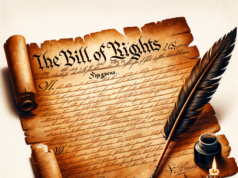
In a broad sense, evidence refers to anything that is used to demonstrate or determine the truth of a legal matter. It is the information for which a legal case is built-on; evidence helps formulate a conclusion or judgment.
Types of Evidence:
There are four types of evidence: demonstrative, documentary, testimonial and real.
Real Evidence: This form of evidence is any object or matter relevant to the case in question. Real evidence is typically an object that is directly involved in some aspect of the case. To be deemed admissible, real evidence—similar to the other forms of evidence—must be material, competent and relevant. Murder weapons, clothing or wrecked vehicles may all be deemed real evidence when collected at the scene of a crime.
Real evidence is authenticated in three ways—through identification of a unique matter or object, by identification of the said object that is made unique or establishing a chain of custody. For the evidence to be deemed admissible it only has to be authenticated using one of the above means.
Demonstrative Evidence: This form of evidence illustrates a witness testimony. Demonstrative evidence is admissible when it can fairly and accurately reflect the testimony and is otherwise deemed unobjectionable—it is authenticated by the witness whose testimony is being illuminated. The witness will identify salient features of the evidence and testify that it accurately reflects what the individual saw or heard during the particular occasion. Common examples of demonstrative evidence may include: diagrams of the crime scene, maps or animations.
Documentary Evidence: A form of real evidence in document form, such as a contract. When a document is offered to the court, it is authenticated in the same way as other forms of real evidence—a witness must identify it or establishes a chain custody for it.
Testimonial Evidence: This form of evidence is the most basic form of evidence and the only kind that does not require a prerequisite for its admissibility. Testimonial evidence consists of witness testimonies, expert opinions and everything that is said in the court. That being said, the witness or source providing the testimony must be deemed competent by the court for the individual’s words to be taken into account. In general, witnesses are deemed competent if the individual meets the following requirements:
• The individual must, with understanding, take the oath of the court or an admissible substitute
• The individual must have personal knowledge about the information he or she is speaking on. The witness must have perceived something with his or her senses that is relevant to the case.
• The witness must accurately remember what he or she perceived
• The witness must be able to communicate—lucidly—what he or she perceived.
How is Evidence Collected at a Crime Scene?
The bulk of crime scenes are surrounded by crucial evidence that must be collected for analysis and use in future prosecution efforts. The process of collecting evidence is stringent; law enforcement officers must employ exacting techniques to avoid tampering with the evidence. Without use of these techniques, evidence may be lost, contaminated or overlooked. Moreover, improper collection of evidence can be deemed inadmissible in court or at a trial.
The following steps must be taken by a law enforcement officer when collecting evidence:
1. The officer must secure and preserve the crime scene. Before evidence can be collected, the scene must be taped-off and secured to prevent further contamination. The crime scene must be formally established; a perimeter must be secured to only allow the entry of necessary personnel. The scene should also be photographed before any evidence is collected.
2. The officer must put on gloves and protective clothing to prevent contamination. The officers must first collect evidence that is fragile or susceptible to the elements. For example, hair, seminal fluid or other liquid evidence can be contaminated or lost quickly.
3. The officers or investigators must use cotton swabs or gauze to gather liquid evidence, such as blood. Items containing seminal fluid or blood should be transported into paper bags to hold moisture and prevent bacteria from forming. When collecting hair, thread or fibers, the officers must use tweezers. Each piece of evidence must be placed individually in sealed bags or containers.
4. For fingerprints, the officer must employ a special powder that adheres to the oil found on the human finger. When a print is detected it will be “lifted” through the use of a special adhesive. This tape is placed on a glass slide, marked and then transported into a sealed plastic evidence bag.
5. For larger pieces of evidence, such as weapons or clothing, the officers must use plastic gloves when transporting the items. It is essential that the officers or agents at the scene do not contaminate the evidence with finger prints, liquids, bacteria or anything else that would manipulate the item or alter it’s surface.

























